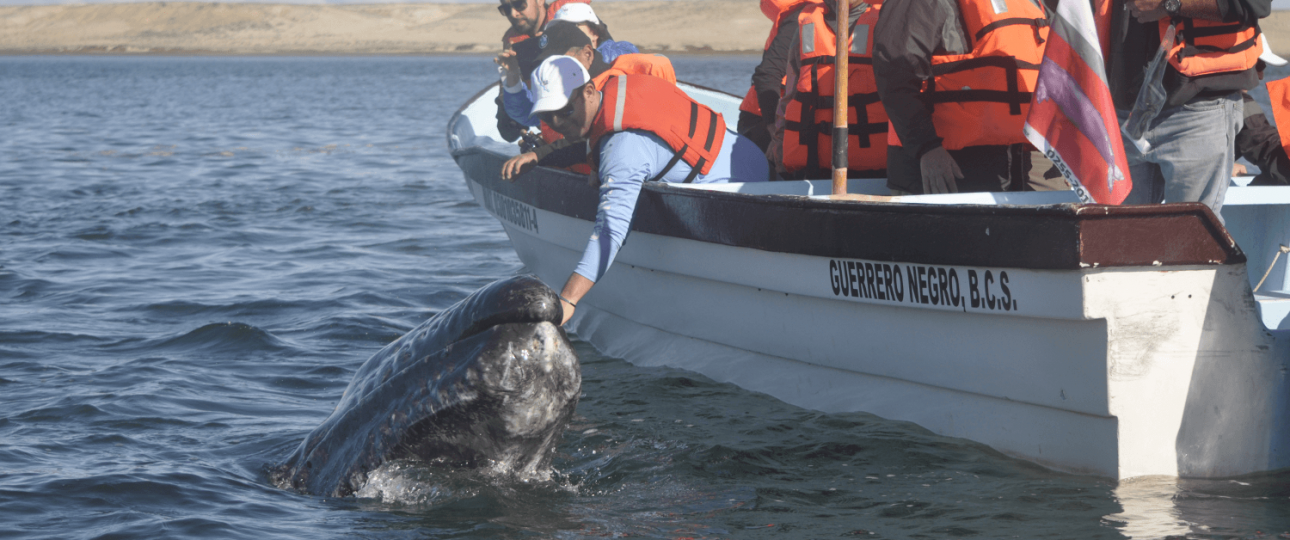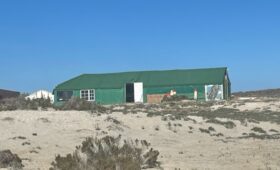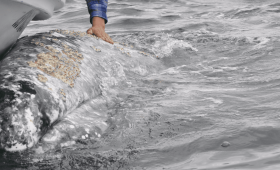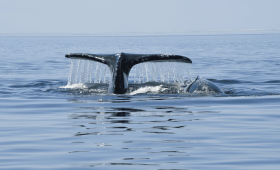If you're looking for an unforgettable family adventure that combines education, nature, and awe-inspiring marine life, grey whale watching in Baja California should be at the top of your list. Each year, thousands of grey whales migrate from the chilly Arctic waters to the warm lagoons of Baja California Sur, offering a rare and magical opportunity to witness these gentle giants up close—sometimes even within arm’s reach.
Travelling with kids can be both thrilling and challenging, especially on nature-based trips. To help you make the most of your family-friendly whale watching adventure, we’ve put together essential tips and insights for planning a memorable, stress-free experience in Baja.
Why Grey Whale Watching in Baja Is Great for Families
1. Close Encounters in Calm Waters
Baja California Sur is one of the few places in the world where grey whales actively seek out and interact with humans. The calm, shallow waters of San Ignacio Lagoon, Magdalena Bay, and Laguna Ojo de Liebre are prime locations for family-friendly excursions. Boats used here are small and low to the water, allowing safe, intimate encounters—perfect for children.
2. Educational Value for Young Minds
Watching grey whales in their natural habitat offers a powerful learning experience. Kids can see the scale and grace of these massive mammals, hear their breaths, and possibly even touch one. Guides often share fascinating facts about grey whales' migration, communication, and parenting behavior, turning the trip into a living classroom.
3. A Safe, Nature-Based Adventure
With trained guides, safety gear, and a strong eco-tourism ethic, Baja’s whale watching trips are designed with safety and conservation in mind. Families can enjoy the thrill of the open sea without worry, while also learning about marine conservation. Choose a shore based accommodation such as Baja Jones whale watching camp at Laguna Ojo de Liebre and the kids will have a multitude of activities to keep them enthused about the trip.
Best Time to Visit Baja for Whale Watching with Kids
The grey whale watching season in Baja runs from late December to early April, with peak months being January to March. For families, February is often ideal—it’s when the most whales are present, and many have already given birth, making sightings of mothers and calves more likely. Frequently families choose the President’s Day Holiday weekend to take advantage of the Monday with no school.
Top Family-Friendly Whale Watching Spots in Baja
1. Laguna Ojo de Liebre (Scammon’s Lagoon)
The location with 5 to 10 times as many whales as either of the other two nursery lagoons. This lagoon is also closest to the USA. Near Guerrero Negro, this lagoon is one of the largest grey whale nurseries. Baja Jones whale watching camp on the shore of the lagoon provides comfortable accommodations close to the whales. Hear whales breathing from the comfort of your bed in the dark of the night.
Tours here are well-organized and usually include educational elements about the whales and surrounding ecosystem.
San Ignacio Lagoon -
Known for its interactive whales and family-oriented eco-camps that are near the water, but not near the whale zone, this UNESCO World Heritage site offers immersive experiences with minimal crowds. The lagoon is remote and remains relatively undeveloped. Far fewer whales visit here than to Laguna Ojo de Liebre, but a popular destination because Ojo de Liebre was closed to whale watching for a number of years early in this areas whale watching history.
2. Magdalena Bay
Located on the Pacific coast near Puerto San Carlos, this spot is more accessible and offers a wide variety of tours, accommodations, and dining options—great for families seeking convenience. But far few whales here than either of the other two lagoons.
3. Tips for Planning a Successful Family Whale Watching Trip
1. Choose a Kid-Friendly Tour Operator
Not all whale watching tours are created equal. Look for operators that specifically cater to families and have English-speaking guides. Operators who include educational briefings, child- sized life jackets, and snacks are a plus. Such as Baja Jones whale watching camp.
Bonus Tip: Read reviews or call ahead to ask if they’ve had many families join in the past.
2. Prepare for the Weather
Even in sunny Baja, mornings on the water can be chilly. Dress in layers and bring windbreakers, hats, and sun screen for everyone. The sun reflecting off the water can be intense, so polarized sunglasses for both adults and kids are recommended.
3. Pack Essentials for Kids
Children have different needs when on the water. Consider packing:
Child-safe binoculars (some locations such as Baja Jones have excellent
loaner binoculars, hand warmers and even battery banks to borrow)
Motion sickness bands or medicine (consult your pediatrician) Almost never
needed at Laguna Ojo de Liebre with the Baja Jones boats.
Snacks and water bottles
A small notebook or journal for observations and drawings
Wipes and hand sanitizer
Waterproof bags for wet clothing or gear
4. Set Realistic Expectations
Explain to your kids what to expect—boat rides can be bumpy, and wildlife sightings aren’t always guaranteed. Let them know that part of the adventure is being patient and respectful toward nature.
That said, Baja’s lagoons are some of the most reliable places in the world for grey whale encounters. You’re likely to see several, including mothers with calves!
5. Make It a Multi-Day Adventure
Rather than cramming the entire experience into a single day, consider staying in a family- friendly camps for a couple of nights. The Baja Jones accommodations include meals, guided tours, and nature walks that enhance the educational aspect of the trip.
Activities to Keep Kids Engaged Beyond Whale Watching
1. Walks in the nearby desert or along the shore
Excellent locations for birds, sea shells and some desert animals such as coyotes or badgers.
2. Visit Local Villages
Spending time in nearby fishing communities exposes children to local cultures, cuisine, and languages—broadening their worldview in a meaningful way.
3. Craft or Art Sessions
Baja Jones whale camp offers arts and crafts for kids and adults. It’s a great way for children to process what they’ve seen and create lasting memories.
Where to Stay with Kids: Accommodation Tips
A shore side camp such as Baja Jones whale watching camp offers simple but comfortable family cabins, educational programs, and meals with opportunities for mingling with other families.
Responsible Whale Watching: Teaching Kids to Respect Nature
Family trips offer a great chance to teach kids about environmental stewardship. Choose operators who follow sustainable tourism practices and educate children on:
Not trying to feed or touch whales unless invited by the whale itself
Respecting all wildlife, not just the whales
Leaving no trace—taking all trash back with them
This way, your trip not only entertains but also builds a foundation of responsibility and appreciation for nature in young minds.
A Life-Changing Family Experience
Grey whale watching in Baja California is more than just an activity—it’s an unforgettable experience that connects your family with the wonders of the natural world. The awe of seeing a grey whale’s barnacle-covered face peek above the water or watching a baby calf play beside its mother stays with children for a lifetime.
With a little planning, the right gear, and an adventurous spirit, your whale watching trip can be smooth, safe, and incredibly rewarding for everyone in the family




